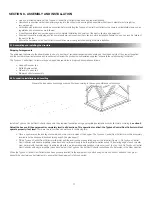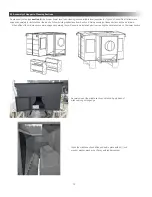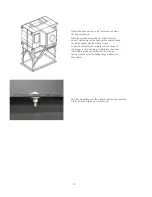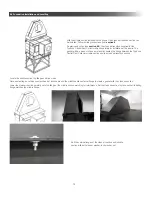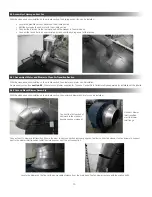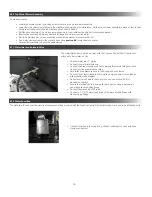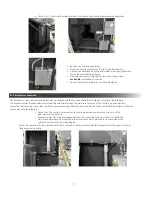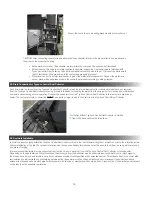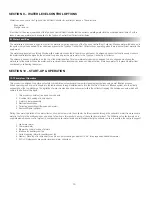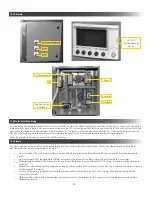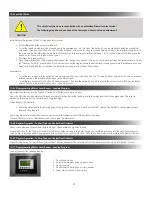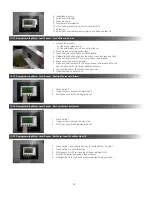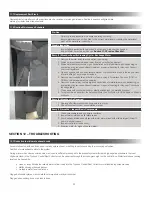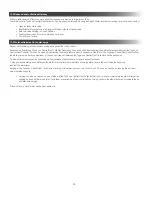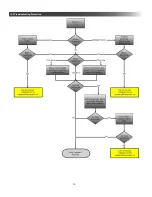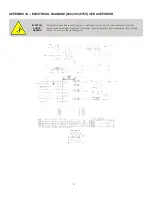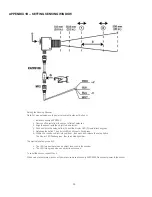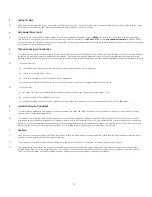
25
12.2 Reduced dust collection efficiency
12.3 Water entrainment in fan discharge
Extreme reduction in air flow may be caused by corrosion or abrasion to impeller sections.
Low water level in Typhoon Central Dust Collector. Can be observed through closed glass sight. Water level below running level can be caused by:
• Open or leaky drain valve.
• Insufficient water supply due to plugged fill valve or faulty solenoid valve
• Solenoid valve sticking in closed position.
• Faulty ultrasonic sensor or accumulation on sensor
• The unit is out of level.
Rain or snow draining into exhauster housing during erection or shut down.
Excessive air flow through Typhoon Central Dust Collector. Overrating can be checked by measuring the differential pressure across the Typhoon
Central Dust Collector. This can be done by subtracting the static pressure directly upstream of the inlet of the Typhoon Central Dust Collector from
the static pressure directly downstream of the exhaust plenum (between the Typhoon Central Dust Collector and the exhauster).
To stop entrainment caused by excessive air flow, increase static pressure or reduce exhauster speed.
A plugged air equalizing hose will cause the water level control box to maintain a too-high water level in the unit. Clean the hose and
readjust the water level.
Surging of the Typhoon Central Dust Collector is a rocking of the water from end to end in the unit. This can be caused by running the unit well
below its rated capacity.
• Surging can also be caused by a duct elbow at the Typhoon Central Dust Collector inlet. Four to five duct diameters length of straight run
will give an even air flow at the inlet. If an elbow is required due to space limitations, turning vanes in the elbow will evenly distribute the air
and eliminate surging.
If the unit is out of level water entrainment will result.
Содержание Typhoon TY-10000
Страница 26: ...26 12 4 Troubleshooting Procedure...
Страница 29: ...29 NOTES...

